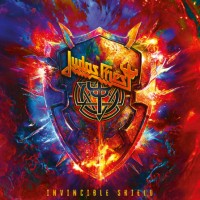Blue Cheer - Biography
This band's profile is 'invisible', meaning that it's much less prominent on the site - either because it's incomplete, or maybe doesn't entirely fit MS format.
Logo
Biography
Blue Cheer began in 1966 as a six piece group, but by 1967, they had become a trio; Leigh Stephens on guitar, Dickie Peterson on bass and vocals, and Paul Whaley on drums. Signed to the Philips record label, Blue Cheer's first album was titled "Vincebus Eruptum", a chaotic masterpiece of raw power. The record gave the group their first and greatest hit, "Summertime Blues". "Vincebus Eruptum" climbed up to 11th position in U.S. charts.
The second album "Outside Inside" (Philips 1968) was divided in two different sections; the outer part (Outside) having been recorded close to some warehouses in New York and Sacramento harbors, with the inner part (Inside) cut in a regular recording studio. These first two albums set the stage for Blue Cheer's reputation, and defined several genres of rock music to come later.
Around August 1968 Leigh Stephens' place was taken by Randy Holden, formerly the leader of The Other Half. Although Holden toured extensively with Blue Cheer, his only recorded work with the band is contained on side two of their third album, "New! Improved!". After Holden left, he was replaced by Bruce Stephens and Ralph Kellogg, and side one of "New! Improved!" marked a definite change in style to a lighter, less combative style.
"New! Improved!" was Paul Whaley's last album (for awhile). He was replaced by Norman Mayell, previously with San Francisco band Sopwith Camel. A fourth album, "Blue Cheer", was stylistically similar, with Gary Yoder contributing guitar, vocals and songwriting. At this point, Bruce Stephens left, and was replaced by Gary Yoder. 1970's "The Original Human Being" and 1971's "Oh! Pleasant Hope" were the last two albums from the first incarnation of Blue Cheer.
After a sabbatical, Dickie Peterson rejoined the music scene, and Blue Cheer was "almost" a new project on several occasions, most notably a version backed by producer Kim Fowley.
The second incarnation really began in 1984, following a reunion between Dickie and Paul Whaley. They recorded "The Beast Is Back", with Tony Ranier, on Megaforce records. Blue Cheer's style at this time begins to blend their seminal style with current guitar influences, a perfect fit for the times. Throughout the eighties and nineties, Blue Cheer recorded and toured sporadically, and eventually claimed Andrew "Duck" MacDonald as the "new" guitar player, now on his third decade in the band.
After a stunning live album recorded in Japan in 1999, then re-released on Track Records, Blue Cheer has finally made it all the way back with "What Doesn't Kill You". Released in 2007, the year that saw Blue Cheer return to America to accolades from the music press, including Rolling Stone Magazine, Blue Cheer is BACK!
Following Dickie Peterson's death of liver cancer in 2009, Blue Cheer permanently disbanded.
Source: http://www.bluecheer.us/history.html
The second album "Outside Inside" (Philips 1968) was divided in two different sections; the outer part (Outside) having been recorded close to some warehouses in New York and Sacramento harbors, with the inner part (Inside) cut in a regular recording studio. These first two albums set the stage for Blue Cheer's reputation, and defined several genres of rock music to come later.
Around August 1968 Leigh Stephens' place was taken by Randy Holden, formerly the leader of The Other Half. Although Holden toured extensively with Blue Cheer, his only recorded work with the band is contained on side two of their third album, "New! Improved!". After Holden left, he was replaced by Bruce Stephens and Ralph Kellogg, and side one of "New! Improved!" marked a definite change in style to a lighter, less combative style.
"New! Improved!" was Paul Whaley's last album (for awhile). He was replaced by Norman Mayell, previously with San Francisco band Sopwith Camel. A fourth album, "Blue Cheer", was stylistically similar, with Gary Yoder contributing guitar, vocals and songwriting. At this point, Bruce Stephens left, and was replaced by Gary Yoder. 1970's "The Original Human Being" and 1971's "Oh! Pleasant Hope" were the last two albums from the first incarnation of Blue Cheer.
After a sabbatical, Dickie Peterson rejoined the music scene, and Blue Cheer was "almost" a new project on several occasions, most notably a version backed by producer Kim Fowley.
The second incarnation really began in 1984, following a reunion between Dickie and Paul Whaley. They recorded "The Beast Is Back", with Tony Ranier, on Megaforce records. Blue Cheer's style at this time begins to blend their seminal style with current guitar influences, a perfect fit for the times. Throughout the eighties and nineties, Blue Cheer recorded and toured sporadically, and eventually claimed Andrew "Duck" MacDonald as the "new" guitar player, now on his third decade in the band.
After a stunning live album recorded in Japan in 1999, then re-released on Track Records, Blue Cheer has finally made it all the way back with "What Doesn't Kill You". Released in 2007, the year that saw Blue Cheer return to America to accolades from the music press, including Rolling Stone Magazine, Blue Cheer is BACK!
Following Dickie Peterson's death of liver cancer in 2009, Blue Cheer permanently disbanded.
Source: http://www.bluecheer.us/history.html



